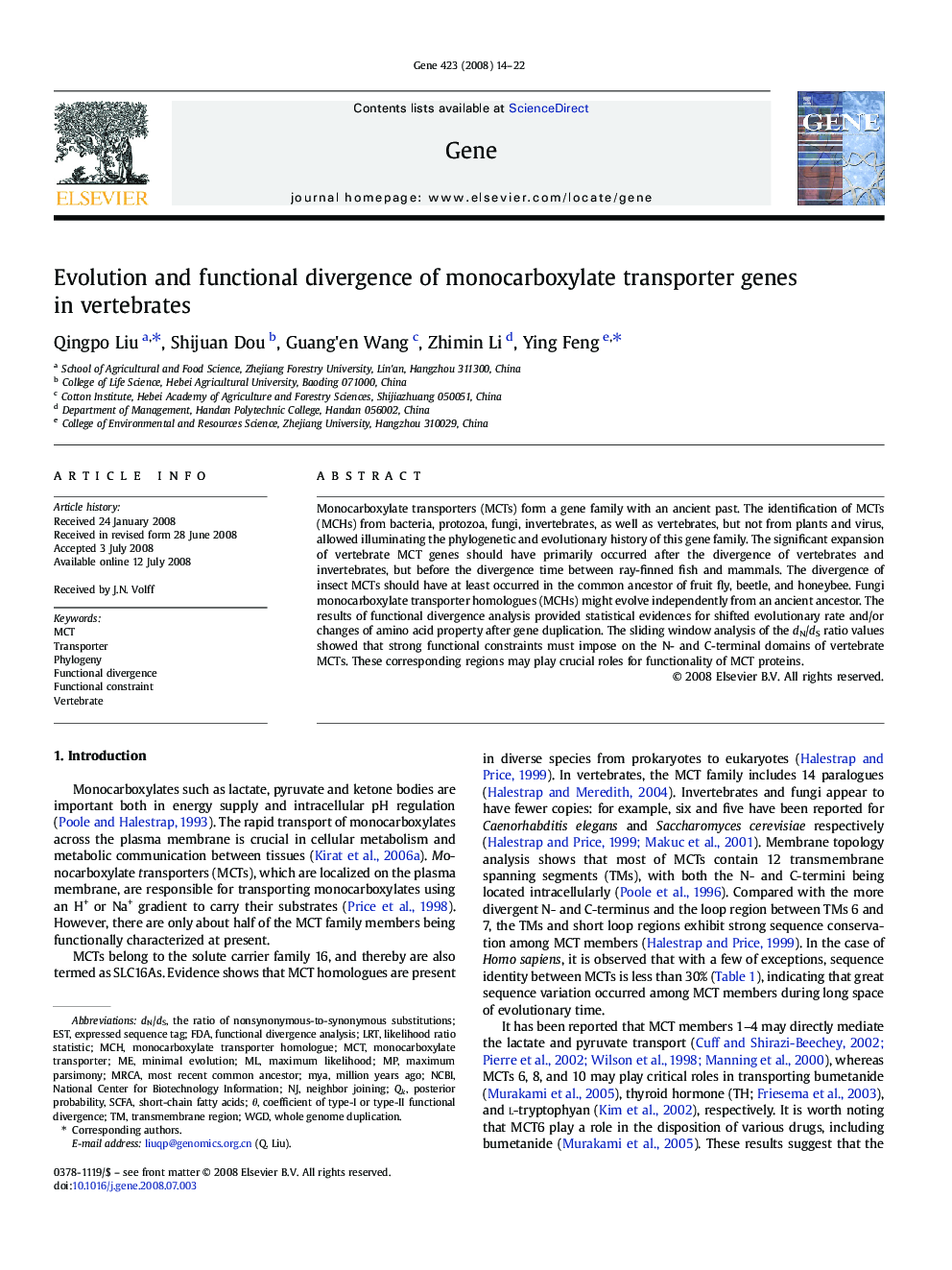| Article ID | Journal | Published Year | Pages | File Type |
|---|---|---|---|---|
| 2819179 | Gene | 2008 | 9 Pages |
Monocarboxylate transporters (MCTs) form a gene family with an ancient past. The identification of MCTs (MCHs) from bacteria, protozoa, fungi, invertebrates, as well as vertebrates, but not from plants and virus, allowed illuminating the phylogenetic and evolutionary history of this gene family. The significant expansion of vertebrate MCT genes should have primarily occurred after the divergence of vertebrates and invertebrates, but before the divergence time between ray-finned fish and mammals. The divergence of insect MCTs should have at least occurred in the common ancestor of fruit fly, beetle, and honeybee. Fungi monocarboxylate transporter homologues (MCHs) might evolve independently from an ancient ancestor. The results of functional divergence analysis provided statistical evidences for shifted evolutionary rate and/or changes of amino acid property after gene duplication. The sliding window analysis of the dN/dS ratio values showed that strong functional constraints must impose on the N- and C-terminal domains of vertebrate MCTs. These corresponding regions may play crucial roles for functionality of MCT proteins.
